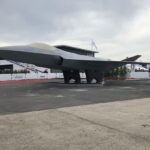The Philippine Department of National Defense (DND) has approved a fresh contract for 12 additional FA-50PH light combat aircraft from Korea Aerospace Industries (KAI). The agreement, signed in the first week of June and publicly confirmed on 10 June 2025, is valued at about $700 million, or 975 billion South Korean won. Delivery of all aircraft is due by mid-2030.

According to industry sources, the package is government-to-government. It covers the aircraft, mission kits, ground support equipment, an initial stock of spares, and a long-term performance-based logistics framework. Defense officials confirm that payments will follow a multi-year schedule aligned with the Armed Forces of the Philippines (AFP) Modernization Program’s Horizon 3 tranche.
FA-50 Block 20 Evolution Enhances Philippine Air Force Capabilities
Each new jet belongs to the Block 20 standard, an evolution of the original FA-50PH delivered between 2015 and 2017. Our analysis shows that Block 20 introduces three decisive changes that lift the platform beyond a basic light attacker and closer to a frontline multirole fighter.
- Active Electronically Scanned Array (AESA) radar for faster, wider, and jam-resistant target tracking
- A fixed aerial refuelling probe compatible with probe-and-drogue tankers
- Full clearance for precision-guided air-to-ground weapons and the latest AIM-9X short-range missiles
The radar choice has not been disclosed. According to industry sources, the contenders include the Raytheon PhantomStrike and an indigenous Korean system derived from the KF-21 program. Either option will give the Philippine Air Force (PAF) a sensor able to track multiple aerial contacts while simultaneously mapping surface targets. This upgrade is part of a broader $700 million FA-50PH acquisition recently confirmed by both governments.
Aerial refuelling addresses a long-standing range limitation for PAF fast jets. The FA-50PH can now fly to the edges of the country’s exclusive economic zone, top up from a tanker, and stay on station for maritime patrol or air defense alert. The DND is studying options for acquiring a dedicated hose-and-drogue tanker or partnering with allied air forces during joint drills. Defense officials confirm that tanker integration planning began last year.
Expanded Precision-Guided Weapons Integration on FA-50 Block 20
The Block 20 jets will arrive wired for the GBU-38/54 JDAM series, GBU-49 laser/GPS bombs, AGM-65 family of air-to-surface missiles, and, for air-to-air work, the AIM-9X. This mix lets the PAF prosecute fixed and moving targets from safe distances while keeping a credible dogfight missile on the rail.
Contract terms include a ten-year support agreement that obliges KAI to maintain a minimum fleet availability rate of 75 percent. According to industry sources, the deal sets key performance indicators covering mean time between failure, spare-parts fill rates, and software-update cycles. The package also funds two high-fidelity simulators and upgrades to the PAF’s existing T-50/FA-50 training center at Basa Air Base.
The Philippines first bought 12 FA-50PH jets in 2014 for roughly $420 million. Those aircraft restored supersonic capability after the retirement of F-5A/B fighters in 2005. They proved their worth during the 2017 Battle of Marawi, executing precision strikes against entrenched militants. The new order raises the planned fleet to 24. That number gives the PAF enough airframes to keep two combat flights on rotational alert while rotating others through training, overhaul, or upgrade.
Cost-Effectiveness of Doubling FA-50 Fleet versus New Aircraft Types
Our analysis shows that doubling the fleet is cheaper than fielding a second aircraft type. Pilots, maintainers, and logisticians already understand the system. Hangars, test benches, and ground equipment are in place. Extending that ecosystem avoids the cost and delay of certifying a new jet from scratch.
Block 20 performance upgrades come with training demands. The PAF will expand its operational conversion unit, qualifying at least 36 additional pilots over the next five years. The training syllabus will add modules on radar-guided intercepts, refuelling rendezvous, and precision-guided munition tactics. Defense officials confirm that a new batch of instructor pilots will start conversion training in South Korea in early 2026.
Infrastructure works are underway at Basa and Cesar Basa Air Bases. Projects include extended runways rated for heavier fuel loads, strengthened parking aprons, and secure data links to integrate the FA-50PH into the AFP’s evolving Command-and-Control, Communications, Computers, Intelligence, Surveillance, and Reconnaissance (C4ISR) backbone. Fiber connections will feed radar data from the Air Defense Command to fighter operations centers in near-real time. According to industry sources, the backbone will later tie into planned ground-based surface-to-air missile batteries under the same modernization phase.
Logistics and Maintenance Support for KAI FA-50 Fleet
A bonded spares warehouse will be built at Clark Air Base. KAI will pre-position high-wear items such as landing gear actuators, avionics line-replaceable units, and canopy mechanisms. The performance-based model gives KAI financial incentives to keep jets mission-ready rather than merely selling parts. Our analysis shows that similar frameworks with other operators have held availability above 80 percent.
Beyond hardware, the deal adds momentum to the Seoul–Manila defense relationship. South Korea has already delivered frigates, corvettes, and surface-to-surface missile batteries to the Philippines. The new fighter order reinforces Seoul’s position as Manila’s top defense supplier. Recent deliveries of MUH-1 helicopters to the Korean Marine Corps further underscore KAI’s growing production and export portfolio. It also secures a multi-year workload for KAI’s FA-50 line, which is busy with deliveries to Poland and Malaysia.
KAI’s production strategy uses modular sections built in Sacheon, then joined on the main FA-50 assembly line. The Philippine airframes will slot into the schedule after the current Polish batch. Industry sources note that KAI’s average output is now eight FA-50 family aircraft per month. That rate supports on-time delivery by 2030 without disrupting other export commitments.
Regional Security Context Drives FA-50PH Block 20 Acquisition
Regional security dynamics influenced Manila’s timing. The West Philippine Sea remains a flashpoint, with frequent intrusions by foreign vessels, and Japan is already moving to bolster Philippine maritime security through the transfer of Abukuma-class destroyers and TC-90 aircraft. An expanded FA-50PH fleet gives the AFP quicker scramble options and greater endurance over disputed waters. Defense officials confirm that the Block 20 jet will carry an Identification Friend or Foe Mode 5 transponder and Link-16 datalink, allowing seamless sharing of tactical data with allied forces during combined patrols.
Our analysis shows that the FA-50PH complements, rather than replaces, the PAF’s still-pending Multirole Fighter (MRF) program. The MRF contest, now narrowed to the F-16 Block 70 and JAS-39 Gripen E/F, aims to field a heavier, radar-guided missile carrier for air-superiority tasks. The FA-50PH, lighter and cheaper to fly, will handle air policing, maritime strike, and advanced lead-in fighter training. Operating both types allows the PAF to balance cost against capability.
Financially, the $700 million agreement fits within the Horizon 3 capital allocation of PHP 250 billion. It consumes about 16 percent of that envelope. Budget planners favor the FA-50PH because total life-cycle cost, including fuel and maintenance, runs roughly two-thirds of that of a larger twin-engine fighter. Such savings free funds for other priority buys such as surface-to-air missiles and offshore patrol vessels.
Safety Upgrades and Risk Management Post March 2025 Incident
Risk management is a consideration after the March 2025 crash that claimed one FA-50PH and its two crew. The investigation cited disorientation and weather, not mechanical failure. Even so, the DND negotiated additional safety clauses. KAI will supply an upgraded flight-data monitoring suite and fund annual safety audits. Defense officials confirm that these provisions were mandatory before the signature.
The support package adds a second-level maintenance facility at Clark. It will handle engine module changes, avionics troubleshooting, and composite repairs. This step moves repair work on-shore, shortens turnaround times, and builds local skills. Over the decade, the facility may evolve into a regional MRO hub for other FA-50 operators in Southeast Asia.
According to industry sources, the Philippine government also secured provisions for technology transfer. The agreement allows local industry to manufacture selected airframe panels and wiring harnesses under KAI supervision. This offsets part of the acquisition cost and supports the national aerospace roadmap.
Phased Delivery Schedule for FA-50PH Block 20 Aircraft
The delivery plan runs in four tranches of three aircraft each. The first tranche will arrive in 2028 once final acceptance testing is complete. The PAF will then conduct operational test and evaluation before declaring initial operational capability. Full operational capability is expected by late 2031, once all pilots and maintainers are qualified on Block 20 systems.
Our analysis shows that the FA-50PH remains competitive in the light-fighter market. Its supersonic speed and Western-qualified weapon inventory differentiate it from subsonic trainers converted for attack roles. For Manila, staying with a proven type eliminates uncertainty while adding key range and sensor upgrades.
The strategic environment in the Indo-Pacific underscores the need for quick-response interceptors. With 24 FA-50PH jets, the PAF can rotate aircraft across three operational bases, cover more of its airspace, and keep a smaller reserve for surge or training. Defense officials confirm that new hardened aircraft shelters and secure communications nodes will be completed at the two secondary operating bases by 2027.
Sustained Philippine Defense Procurement Commitment
Finally, the order signals continuity in Philippine defense procurement. Manila has at times shifted focus between internal security and external defense. This contract shows a sustained commitment to external deterrence. It aligns with other moves, such as acquiring long-range patrol aircraft and coastal missile systems.
The challenge now moves from contract signature to implementation. Funding must flow on time, infrastructure must be ready before each delivery, and pilots must master new tactics. If those milestones hold, the FA-50PH Block 20 will anchor the PAF’s fast-jet fleet through the 2030s, giving the Philippines credible reach over its vast maritime domain.
REFERENCE SOURCES
- https://www.navalnews.com/
- https://www.overtdefense.com/2025/06/11/philippines-signs-700-million-deal-for-12-more-fa-50ph-jets-from-south-korea/
- https://www.reuters.com/en/south-koreas-kai-signs-700-mln-aircraft-deal-with-philippines-2025-06-04/
- https://www.defensenews.com/global/asia-pacific/2025/06/05/philippines-orders-12-more-fa-50-combat-jets-from-south-korea/
- https://defence-industry.eu/philippines-signs-700-million-contract-with-kai-for-12-new-fa-50ph-block-20-fighter-jets/
- https://thedefensepost.com/2025/06/04/philippines-12-fighter-jets-korea/
- https://www.kai.aero/eng
- https://www.pna.gov.ph/
- https://www.janes.com/defence-news
- https://www.defensenews.com/
- https://www.lockheedmartin.com/en-us/products/t-50.html
- https://thediplomat.com/



